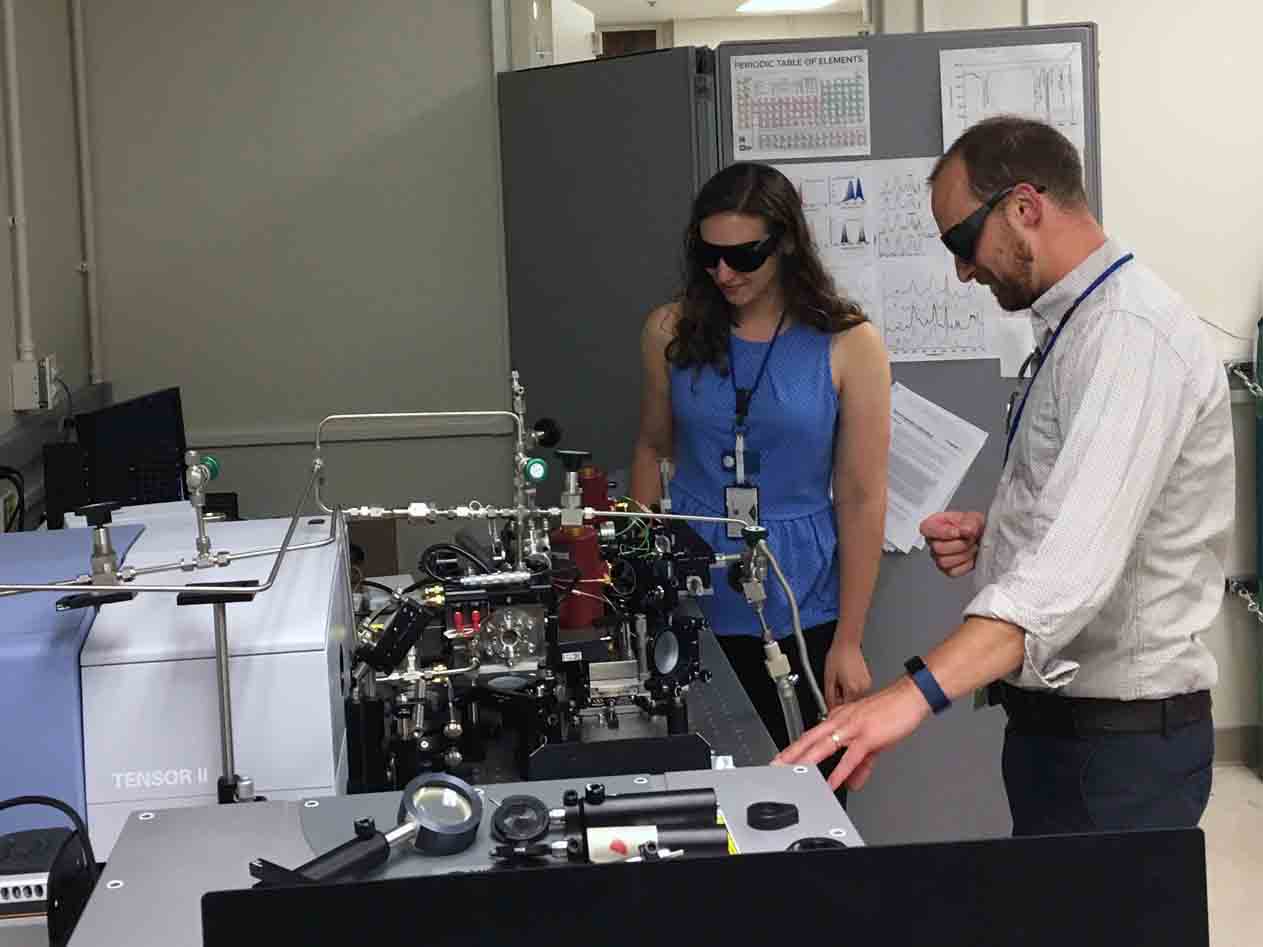
Lauren Finney supported Lawrence Livermore National Laboratory experiments
Lauren participated in research testing the effects of oxygen on uranium speciation during a summer internship.

Lauren participated in research testing the effects of oxygen on uranium speciation during a summer internship.
A team of researchers from Lawrence Livermore National Laboratory (LLNL) and the U-M Department of Nuclear Engineering & Radiological Sciences (NERS) has found that the rate of cooling in reactions dramatically affects the type of uranium molecules that form. Their findings were recently published in Scientific Reports in a paper titled “The effect of oxygen concentration on the speciation of laser ablated uranium.”
The team from NERS included Prof. Igor Jovanovic and then PhD student Lauren Finney. (Lauren has since received her PhD.) She was a Seaborg Institute Summer Intern at LLNL during the summer of 2019. It was during her internships that she did much of the initial testing, experimental set-up, and data analysis on laser ablation of uranium in different oxygen environments, which would become the basis of future experiments for the final publication.

“The experimental analysis that I helped perform involved Raman spectroscopy and FTIR (Fourier transform infrared) spectroscopy of deposits collected post-laser ablation to determine the speciation of uranium, from 20–100% oxygen backgrounds,” Lauren said.
After the internship, a post-doc continued the experiments, and Lauren was involved in conversations about that data and contributed to the paper that was ultimately published.
Learn more about the research in this LLNL highlight.